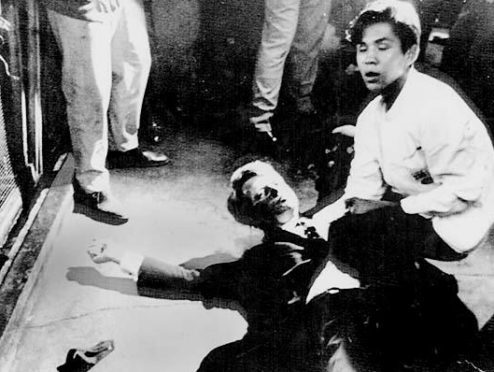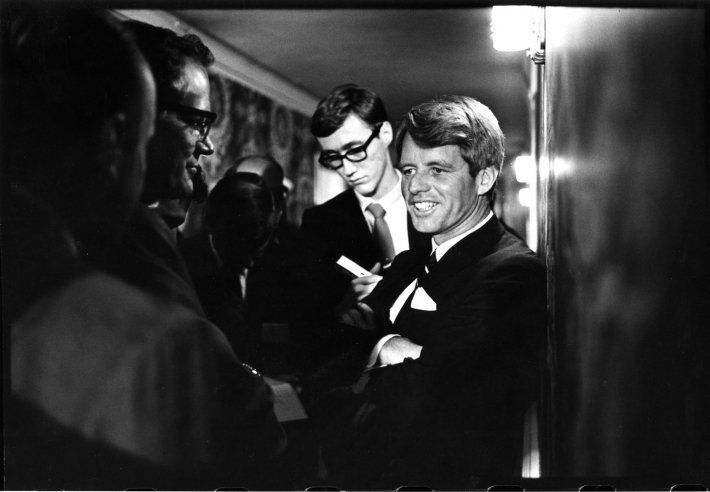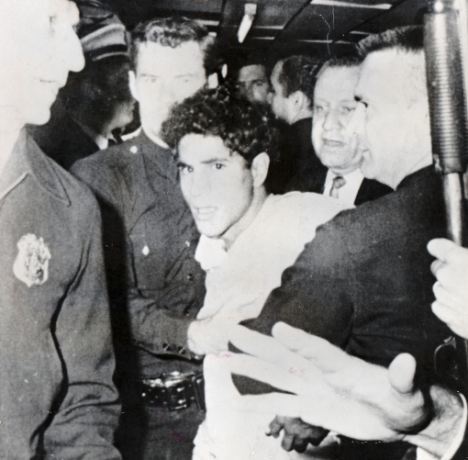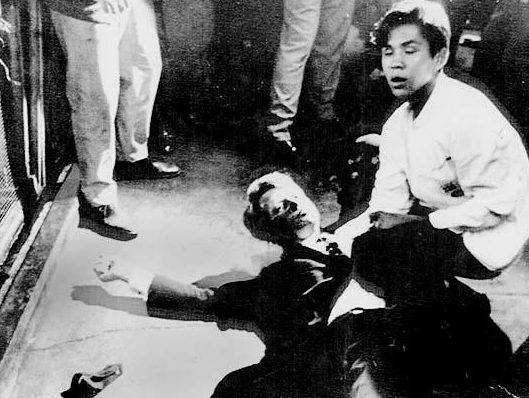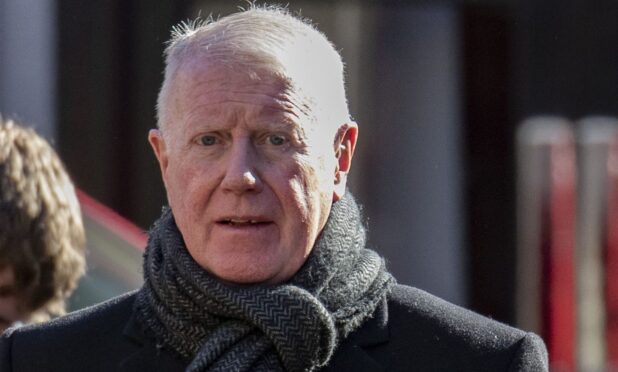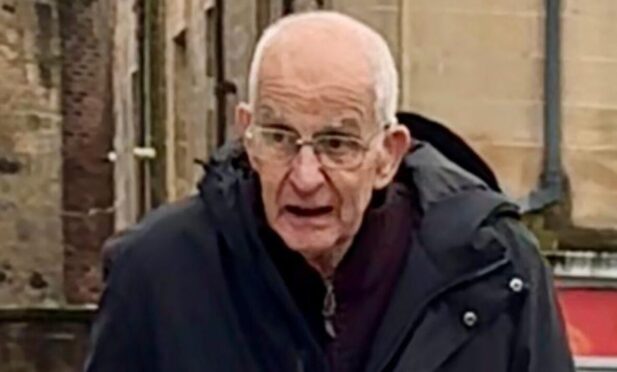Fifty years after the assassination of US Senator Robert Kennedy, Dundee author Patrick Kelly – who wrote JFK: Just a Patsy – asks whether ‘mind-control’ may have led the assassin to carry out the act.
In June 1968, on a very hot summer night 50 years ago, 42-year-old Senator Robert Kennedy gave a speech at the Ambassador Hotel in Los Angeles after winning the
California presidential primary.
Shortly after midnight, with some of his supporters leading the way, Kennedy made his way through to the pantry area of the hotel.
Within a few minutes, Robert Kennedy was on the kitchen floor after he had been shot several times.
His assassin was a 22-year-old Palestinian Sirhan Sirhan. The senator would die later from his injuries on June 6 1968.
It was a violent time in US politics with the Vietnam War raging and violent protests against black segregation were fought on the streets of America.
Martin Luther King Jr. had been assassinated in April 1968, igniting riots across the country.
With all this political turmoil President Lyndon B. Johnson decided not to seek a second term in the upcoming presidential election.
Former president John F. Kennedy’s brother Robert decided it was time to take up the gauntlet and run for high office.
As Robert Kennedy and his supporters were trying to find a way out of the Ambassador Hotel, Sirhan Sirhan stood in front of the senator with a .22 revolver in his hand.
He was only a foot away when he fired several shots at Kennedy.
The senator was shot three times.
Once in the head and twice in the back—with a fourth bullet passing through his jacket.
Five bystanders were also wounded. Sirhan was quickly wrestled to the ground and arrested a short time later.
Within a few hours, evidence began to show problems that things were not as they seem.
One bullet, fired at a range of about one inch, entered behind his right ear, dispersing fragments throughout his brain.
The other two entered at the rear of his right armpit; one exited from his chest and the other lodged in the back of his neck.
Witnesses stated that Sirhan was standing directly in front of Senator Kennedy.
So how could a bullet enter behind Kennedy’s right ear?
Sirhan fired eight shots in total, yet 14 were found lodged around the pantry area and in the other victims who were also shot.
The Los Angeles Police covered up the number of shots and destroyed vital evidence burning photographs from the crime scene.
Sirhan, to this day, has no knowledge of the shooting so it begs the question was he the subject to some form of mind control?
The CIA had a developed a programme called MK Ultra.
This was a mind-control, brainwashing, programme developed and tested on civilians.
Was Sirhan programmed to kill the senator with him having no knowledge of the crime?
The closest person to Kennedy when the shooting started was a security guard Eugene Thane Cesar. He was guiding Kennedy by the arm when he was killed.
Cesar also admitted that he had his gun in his hand at the time of the killing.
It has been alleged that the security officer was, in fact, Kennedy’s assassin.
The final twist in the tale was the girl in “The Polka-Dot Dress.”
A witness Sandra Serrano was sitting on a staircase outside the Ambassador Hotel.
She said that shortly after the shooting a woman in a polka-dot dress ran past her shouting, “We shot him.”
She asked, “Who did you shoot?” The woman replied, “Kennedy.”
Serrano was later harassed and bullied by Detective Hank Hernandez, was rumoured to have intelligence connections, to change her story. She never did.
The mystery of the assassination of Robert Kennedy continues to this day.
Strong evidence suggests there was a conspiracy surrounding his untimely death.
Sirhan confessed to the crime at his trial and received a death sentence on March 3, 1969.
However, Sirhan has spent the rest of his life in prison.
